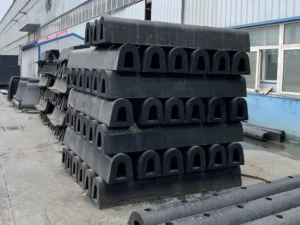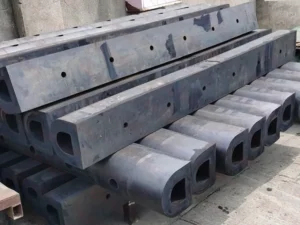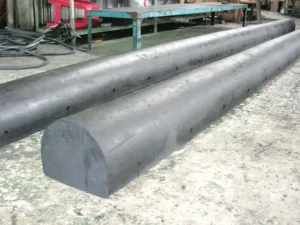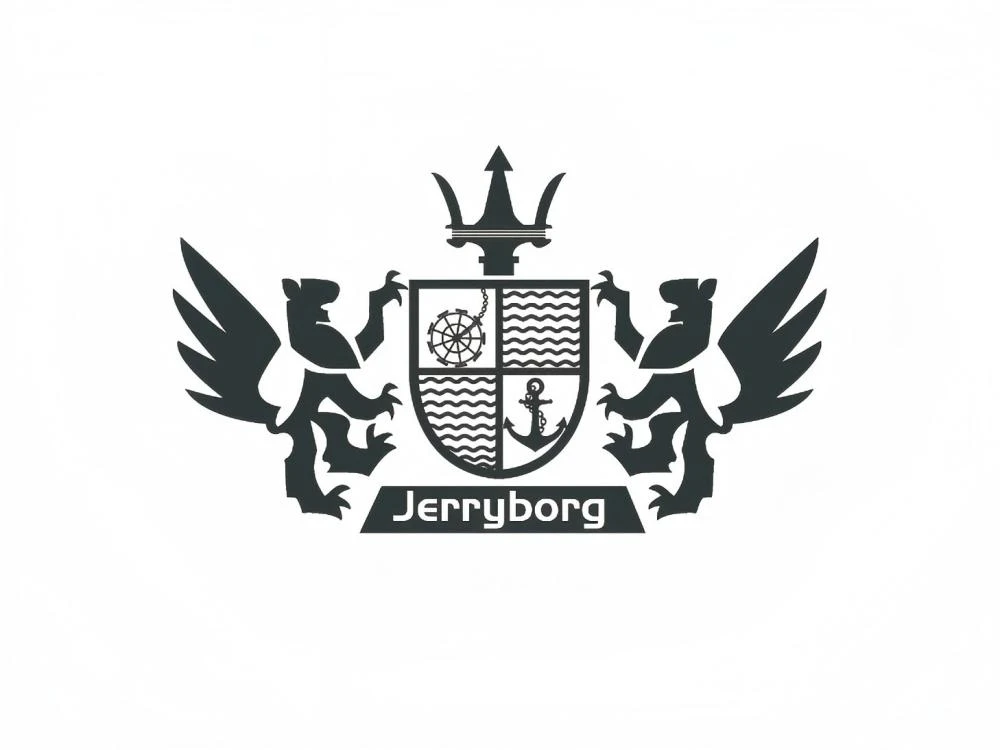The importance of fenders cannot be overstated. Without them, the safety of ships and vessels would be under question. Different types of fenders are available. Among those, the D-type fenders are very efficient. However, the question is: what are rubber D fenders used for? That’s the question that I come across daily.
Many people think different types of fenders offer different functions. This is wrong, as all the marine fenders protect the ship. However, how they protect the vessels makes them different from each other. These D-type fenders get their name from their D shape. Let’s dive deep and discuss these fenders in detail.
Overview of D Fenders

D fenders are rubber bumpers that protect vessels. They usually remain around the sides of vessels. So, when a vessel docks, these D-shaped fenders collide with the docking structure instead of the vessel’s body. They are compressible and absorb the shock.
That collision doesn’t impact the bodies of the vessels at all. The fenders have an impact on it. The shape of these fenders resembles the alphabet ‘D.’ Therefore, they are known as D fenders. Most of these fenders consist of rubber materials. What makes these fenders popular is their high capacity to absorb shocks.
They use high-quality rubber. So, during collisions, this rubber absorbs the impact forces. The rubber also offers high frictional resistance. The shape of the fenders also makes them excellent to absorb strong impact. The flat side of these fenders provides more area of contact. This ensures their excellent performance.
Shape & Structure of D Fenders

The D fenders’ shape is something that makes them very efficient. As you know, there are different types of fenders. However, their shapes are random, and they don’t contribute to the performance of fenders. However, these D fenders have two sides or facets. Let’s drill down and discuss them.
1- Front Face
The front of these fenders is flat. It offers a maximum area of contact when colliding with the docking structure. This flat front ensures the fenders cover most of the ship’s area. Due to the large flat surface, these fenders efficiently absorb and distribute the impact force. So, both the fender and the ship remain safe.
1- Curved Back
The back of these marine D fenders is curvy. The curved shape ensures it is more flexible. When it collides with a ship, this curvy area compresses. As a result, it quickly absorbs most of the impact forces. This curvy portion of D fenders remains on the outer side. So, when a massive force is applied to them, they can easily handle it. The minor impact goes to the ship’s body.
Application or Uses of D Fenders
In the section above, I provided an overview of D fenders. However, our main topic is their uses. Let’s discuss some of their top applications and purposes.
1- Dock Protection
D fenders are an excellent option for dock protection. Users install them on the docking points or structures. Once installed, they remain there for years to come. Whenever a ship stops at the docking, these fenders provide protection.
Without these, the ship will collide directly with the docking structure. As a result, the impact force can affect the quality and integrity of the docking structure. Docks generally face regular parking on many ships and boats. These D-shaped fenders protect the docking. Without these, the docking structure will get damaged due to brutal force or collisions.
2- Vessel Protection
D fenders are also very useful for protecting vessels. The operator installed them on the sides of the ships so they wouldn’t be damaged whenever they collided with others. Instead, these D-fenders work their magic in the best possible way.
The rubber D fenders first collide with the opposite object. As a result, these fenders absorb the shocks and save the vessels. Although the vessel still faces the jerk, it’s not very intense. You can install these fenders on boats, ships, and big vessels.
During docking, the vessels generally approach the docking fast. In this case, their collision with the docking structure would damage the ship. However, these D fenders come between the docking structure and the ship. As a result, they act as a barrier or buffer and absorb the impact. So, both docks and vessels remain safe.
3- Loading and Unloading Areas
Imagine a dock with a busy schedule. Trucks and vehicles come and go, loading or unloading the vessels. Right? Such busy docks generally face issues as vehicles bump into them. The docking structure starts to degrade due to such continuous bumps. So, their maintenance could be costly.
Therefore, docks use D fenders on the edges of docks and loading bays. This ensures that vehicles’ bumping does not impact the integrity of the docks. If vehicles affect the docking structure, fenders protect it by absorbing the shocks. Nowadays, it has become common to use D fenders for loading and unloading areas.
4- Protection Against Harsh Weather
It won’t be wrong that docks always remain under stress. The large vessels remain on these docking structures during their stay. Imagine windy weather with solid sea waves. These bad weather and wind keep the vessels moving. Although this movement is slight, it can leave an impact on docks.
Ships can continue colliding with docking structures. You may say that this collision is gentle. But what if this gentleness is consistent for a few hours? It would affect the quality of the docking structure. However, the D-fenders install the docks to secure the docking structure. They absorb the negative impacts.
Quick Tip: Have you ever noticed many vessels staying on docking platforms for many hours? They do not damage the docking structure. This is because those docks use D fenders. The fenders absorb the impact and let the dock and ships feel the jerk.
Types of D Fenders
There are different variations of D fenders available. Each of those types has its advantages. However, the primary function of all the D fenders is to protect the ships and docking structures. Here we go and discuss their types.

- Solid D Fenders: These fenders are very durable and robust. The reason is that its sides are covered with rubber. In simple words, rubber is present from all of its sides. So, its shock absorption capabilities get better. Usually, these D fenders are expensive and premium. They are utilized in high-traffic docks with aggressive loading and unloading.
- Hollow D Fenders: As the name suggests, the center of these fenders is hollow. The sides contain the rubber. This protects the docking of ships during the collision. Small boats use this type of fender because it is not very durable. Moreover, its shock absorption is also limited.
- Extruded D Fenders: These fenders are unique and can fulfill the custom needs of users. They are made by pushing rubber and creating a continuous D-shaped strip. Therefore, these fenders are of different sizes. A single long piece of fender will cover all the edges of the docking structure. There won’t be any gap that would have existed if you had to use multiple smaller fenders.
- Wing Type D Fenders: This type of fenders varies from others in terms of their mounting capability. Their corners are more like wings and extend from the sides. So, they are straightforward to attach to ships or docking structures. Due to the bigger sides, they offer excellent mounting stability.
Are D Fenders Worth it?
Yes, the D fenders are excellent for their purpose. Their durability, strength, and impact absorption are second to none. They can be installed on docking structures or vessels. Above all, they are relatively inexpensive, which is a big plus.
Everything has pros and cons, and these D-type fenders are no exception. Many people believe that the shape of these fenders is not ideal. This could have been improved. When used, they do not make the vessels look attractive or appealing. Moreover, the sizes of these fenders are also compromised.
Almost all the D fenders are smaller in size. So, you’ll have to use multiple fenders to cover the whole vessel. These are some drawbacks. But I still consider them the best deal. The reason is that they offer excellent shock absorption. Moreover, the owners of small docks can also afford them.
The looks of these fenders have nothing to do with their functionality. Moreover, the small sizes are also not a big issue. As the prices of these fenders are low, you can buy multiple fenders. In this way, you will be able to protect the whole ship’s side with ease. The features these fenders offer overshadow all the drawbacks.
Conclusion
D fenders are excellent inventions. Their usability has enhanced their protection for docks and vessels. What makes them stand out among other fenders is their unique design. The D-shaped body ensures that the fenders absorb all impacts to the maximum extent. Moreover, these fenders cover most parts of the vessels. Using them on both small boats and large vessels will be beneficial.
